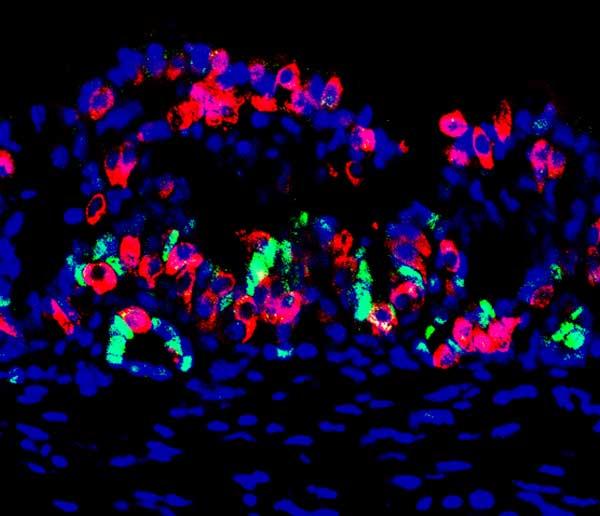June 2011 - An article in the current issue of Technology & Innovation, Proceedings of the National Academy of Inventors � reports on the bright future and enormous need for stem cell therapeutics that may offer hope for those suffering from debilitating and deadly diseases.
Stem cell transplantation may offer therapy through "simple cell replacement" procedures to restructure damaged organs, tissues and cells, or provide methods for "reawakening" biological cues to regenerate cells.
"The future for stem cell applications is indeed promising, although there are no assurances that cures will be found," said corresponding author Dr. John Sladek, a professor of the University of Colorado College of Medicine's Departments of Neurology and Pediatrics. "However, there is scientific consensus that time and innovation, combined with a dose of serendipity, will lead to the cures people deserve."
According to Dr. Sladek and co-author Dr. Kimberly Bjugstad, also from the UC Department of Pediatrics, the need for stem cell therapies (based on two categories of stem cells, embryonic stem cells (ESCs), able to differentiate into many kinds of cells (pluripotent), and adult (somatic) stem cells, less capable of high differentiation) - corresponds to many of the diseases most responsible for mortality. The list of potential stem cell therapy targets includes: cardiovascular diseases, cancer, neurodegenerative diseases, such as Alzheimer's disease and Parkinson's disease, spinal cord injury and autoimmune diseases, including diabetes.
"One of the key, and as yet unanswered questions in cell-based therapeutics, is when in the course of human illness to intervene," said Dr. Sladek. "Traditional wisdom suggests that sooner is better."
Continue Reading Below ↓↓↓
Based on their research, Dr. Sladek and his fellow researchers suggest that younger patients with the shortest Parkinson's disease duration, for example, are more suitable for cell transplantations than patients who have suffered with the disease for a decade or longer. The less damaged brain, he said, is more receptive to new cells that function to protect and preserve remaining neurons.
Progress is great, yet scientific challenges to creating new cell-based therapies must be overcome one-by-one.
"Much more is to be learned about reprogramming cells," pointed out Dr. Sladek. "For example, induced pluripotent stem cells (iPSC) are a third source of stem cells. These cells can be reprogrammed in the laboratory to be self-renewing and pluripotent, but in some cases resist reprogramming or retain a genetic memory that may be a complication."
Besides scientific challenges, political challenges to stem cell transplantation persist as well. Despite on-and-off-again bans on federal funding for embryonic stem cell research in the U.S., to the discovery of increasingly more utility in the use of adult stem cells derived from bone marrow, fat cells and liver cells, research in the U.S. is moving forward at great speed as more animal model-based research is leading to human clinical trials.
"It is unlikely that all patients will benefit from cell-based therapies," concluded Dr. Sladek. "Factors related to patient selection need careful consideration, especially concerning stage and severity of disease, the patient's prior therapies, and the need for immunosuppression as well as many other factors."
Source: University of South Florida (USF Health)










